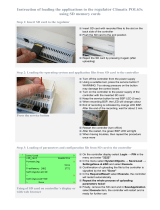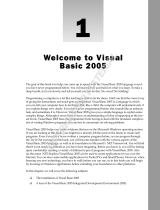
5
10.8.3. USB devices in the system .............................................................................................................84
10.9. I
2
C ....................................................................................................................................... 84
10.9.1. Hardware resources used by the interface .....................................................................................84
10.9.2. Enable the interface in the kernel....................................................................................................85
10.9.3. Manage the interface from user space............................................................................................86
10.10. RTC..................................................................................................................................... 90
10.10.1. Manage the device from user space..........................................................................................90
10.11. Video................................................................................................................................... 91
10.11.1. Hardware resources used by the driver.....................................................................................91
10.11.2. Include video support in the kernel............................................................................................92
10.11.3. Manage the display from the user space...................................................................................92
10.12. Watchdog............................................................................................................................ 93
10.12.1. Enable/Disable the watchdog in the kernel................................................................................93
10.12.2. Manage the watchdog from user space.....................................................................................93
11. Using the Wireless LAN adapter................................................96
11.1. Concepts............................................................................................................................. 96
11.2. Features of the WLAN adapter........................................................................................... 96
11.3. Include the wireless interface in the Windows CE kernel................................................... 96
11.3.1. Required components.....................................................................................................................97
11.3.2. Recommended catalog components...............................................................................................97
11.4. Wireless interface LEDs...................................................................................................... 98
11.5. Driver start........................................................................................................................... 99
11.6. WLAN network settings....................................................................................................... 99
11.7. Connect to an access point (infrastructure mode)............................................................ 100
11.7.1. Graphic mode ...............................................................................................................................100
11.7.2. Command line mode.....................................................................................................................102
11.8. Connect to a computer (ad hoc mode) ............................................................................. 106
11.8.1. Graphic mode ...............................................................................................................................107
11.8.2. Command line mode.....................................................................................................................108
11.9. Authentication and encryption........................................................................................... 108
11.9.1. Supported methods.......................................................................................................................108
11.9.2. Authentication and encryption combinations.................................................................................109
11.9.3. Open authentication without encryption........................................................................................110
11.9.4. Open authentication with WEP encryption....................................................................................112
11.9.5. WPA-PSK authentication with TKIP encryption............................................................................114
11.9.6. WPA2-PSK authentication with AES-CCMP encryption ...............................................................116
11.9.7. WPA Enterprise authentication.....................................................................................................118
11.10. APs supporting several authentication and encryption methods...................................... 123
11.11. Wireless configuration tool................................................................................................ 124
11.11.1. Display wireless status information..........................................................................................125
11.11.2. Display transmission driver statistics.......................................................................................125
11.11.3. Commands for configuring driver parameters..........................................................................126
11.11.4. Store parameters to Registry...................................................................................................126
11.11.5. Preferred Network Configuration .............................................................................................127
11.11.6. Source code for WifiConf.........................................................................................................129
12. Persistent Registry ...................................................................131
12.1. Regtool application............................................................................................................ 131
13. Boot loader development.........................................................132
13.1. Development environment................................................................................................ 132
13.2. Platform specific source code........................................................................................... 132
13.3. Customize U-Boot............................................................................................................. 132
13.3.1. Default environment variables ......................................................................................................132
13.4. Build U-Boot...................................................................................................................... 133
13.4.1. Configure U-Boot for the target platform.......................................................................................133
13.4.2. Compile U-Boot.............................................................................................................................134
13.4.3. Install U-Boot image......................................................................................................................134
13.5. Updating U-Boot................................................................................................................ 134
13.5.1. Update from a running Windows Embedded CE system..............................................................134
13.5.2. Update from U-Boot......................................................................................................................134

























